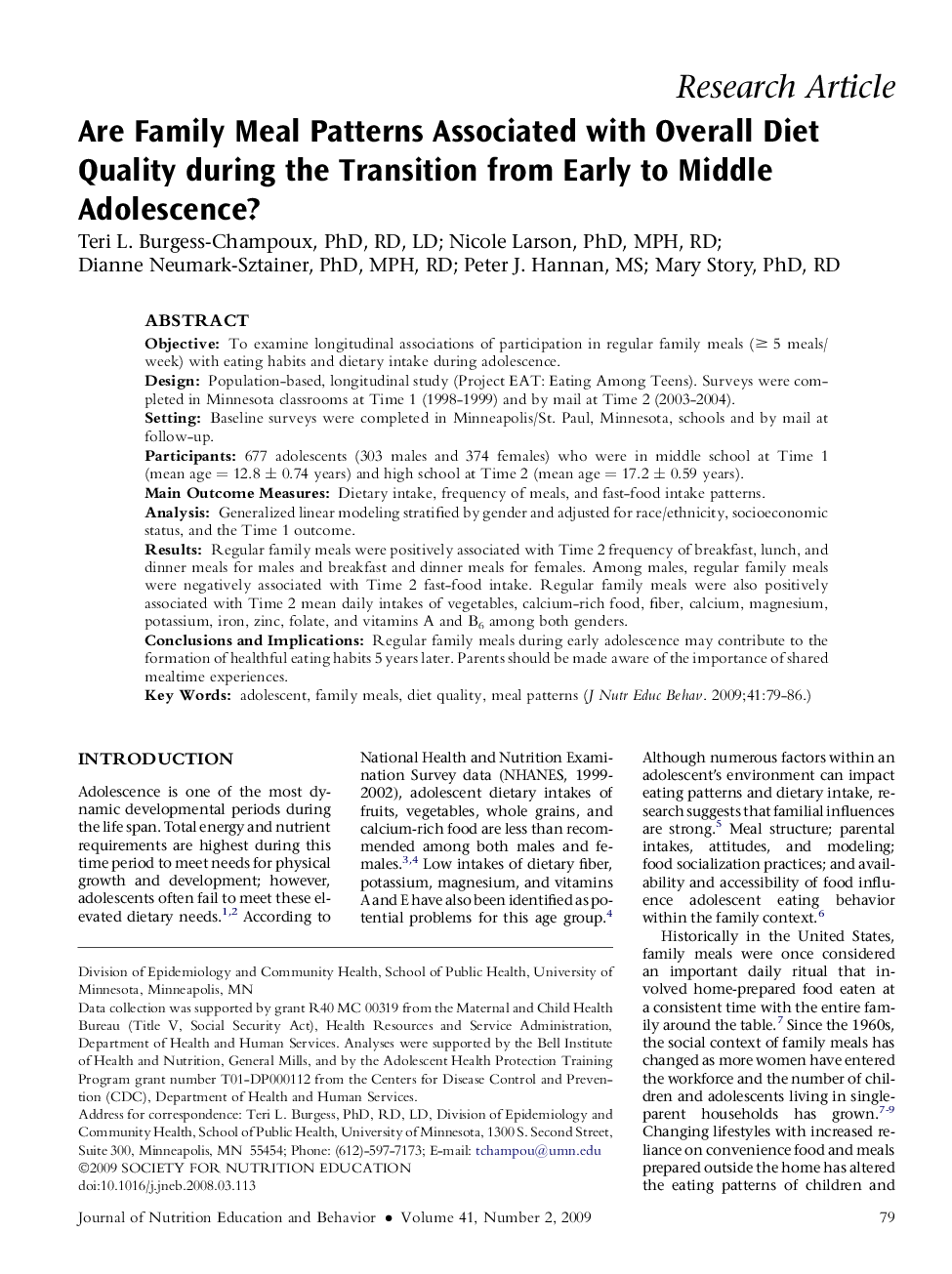| Article ID | Journal | Published Year | Pages | File Type |
|---|---|---|---|---|
| 363207 | Journal of Nutrition Education and Behavior | 2009 | 8 Pages |
ObjectiveTo examine longitudinal associations of participation in regular family meals (≥ 5 meals/week) with eating habits and dietary intake during adolescence.DesignPopulation-based, longitudinal study (Project EAT: Eating Among Teens). Surveys were completed in Minnesota classrooms at Time 1 (1998-1999) and by mail at Time 2 (2003-2004).SettingBaseline surveys were completed in Minneapolis/St. Paul, Minnesota, schools and by mail at follow-up.Participants677 adolescents (303 males and 374 females) who were in middle school at Time 1 (mean age = 12.8 ± 0.74 years) and high school at Time 2 (mean age = 17.2 ± 0.59 years).Main Outcome MeasuresDietary intake, frequency of meals, and fast-food intake patterns.AnalysisGeneralized linear modeling stratified by gender and adjusted for race/ethnicity, socioeconomic status, and the Time 1 outcome.ResultsRegular family meals were positively associated with Time 2 frequency of breakfast, lunch, and dinner meals for males and breakfast and dinner meals for females. Among males, regular family meals were negatively associated with Time 2 fast-food intake. Regular family meals were also positively associated with Time 2 mean daily intakes of vegetables, calcium-rich food, fiber, calcium, magnesium, potassium, iron, zinc, folate, and vitamins A and B6 among both genders.Conclusions and ImplicationsRegular family meals during early adolescence may contribute to the formation of healthful eating habits 5 years later. Parents should be made aware of the importance of shared mealtime experiences.
